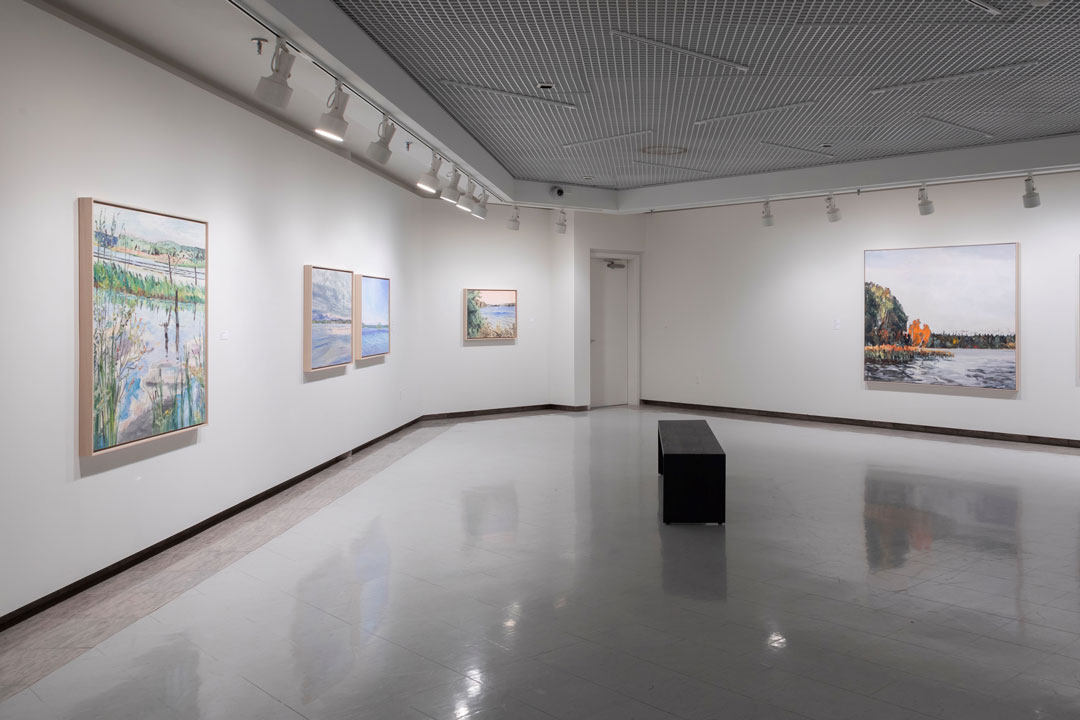
Take 5: Five alumni-created artworks in USask’s Art Collection
The University of Saskatchewan has acquired more than 6,000 works of art since the university was established more than a century ago
The University of Saskatchewan (USask) Art Collection consists of more than 6,000 artworks that have been acquired since the university was established in 1907. Guided by the vision of USask’s first president, Dr. Walter C. Murray, the collection’s earliest works include prominent and emerging artists of the day, such as Group of Seven painters Arthur Lismer and Lawren Harris and Saskatchewan-based artists Frederick Loveroff, James Henderson, and Ernest Lindner.
Over more than a century, the collection has grown to include early Canadian and modernist works from North America and Europe, Indigenous artworks, and a prairie folk art collection. Nearly 90 per cent of the collection’s holdings are works by Canadian artists; of that, more than 70 per cent are Saskatchewan artists. The USask Art Collection is also known for housing artworks created by USask alumni, such as Wynona Croft Mulcaster (BA’43), Marie Lannoo (BA’77), Zachari Logan (BFA’05, MFA’09), Adrian Stimson (MFA’06), and many more.
For this Take 5 column, staff from the USask Art Galleries and Collection have selected five alumni-created works of art from the university’s permanent collection to showcase on the Green&White website.
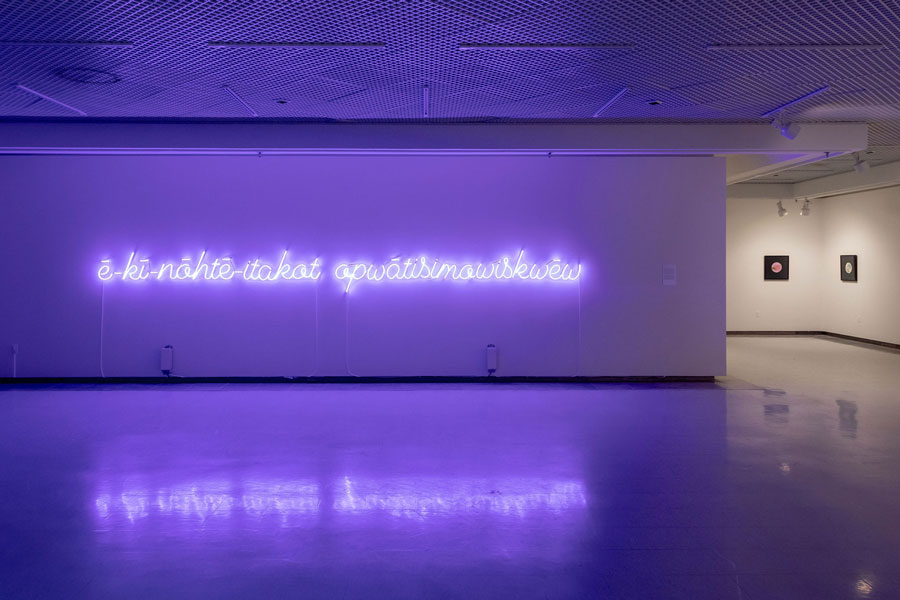
Joi T. Arcand (BFA’06)
ē-kī-nōhtē-itakot opwātisimowiskwēw (she used to want to be a fancy dancer)
2019
Neon and associated hardware
Joi T. Arcand (BFA’06), an artist from Muskeg Lake Cree Nation in Saskatchewan who currently resides in Ottawa, Ont., has exhibited across Canada, the United States, and Europe. She engages in Indigenous language revitalization by inserting nēhiyawēwin (Plains Cree) language and imagery into public spaces. Through ē-kī-nōhtē-itakot opwātisimowiskwēw (she used to want to be a fancy dancer), Arcand reflects on her short-lived experience powwow dancing in her youth, and on her long-lost dream of wanting to be a ballerina. Arcand is currently a member of the Ottawa-based art and curatorial collective Wolf Babe. Alongside fellow USask graduate Felicia Gay (BA’04, MA’11), Arcand previously co-founded Red Shift Gallery, a Saskatoon presentation space for contemporary Indigenous art. From 2012-24, Arcand also served as the founder and editor of the Indigenous art magazine kimiwan, and she was shortlisted for the prestigious Sobey Art Award in 2018. In 2024, she was the recipient of ohpinamake, a $10,000 prize for Indigenous artists presented by USask in collaboration with donors Jim and Marian Knock.
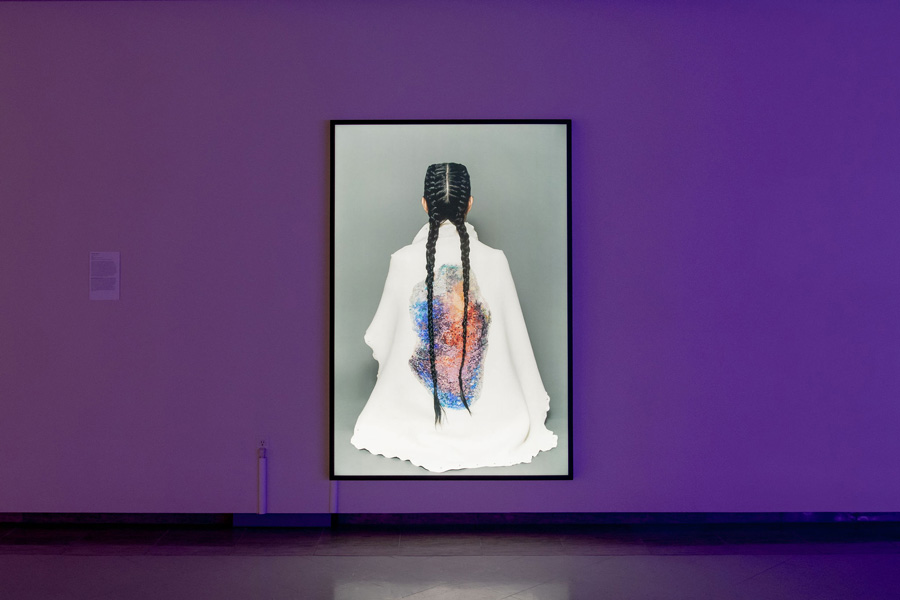
Catherine Blackburn (BFA’07)
But there’s no scar II
2020
Light box image in wooden frame
Edition 1/3
Catherine Blackburn (BFA’07) was born in Patuanak, Sask., is of Dene and European ancestry, and is a member of the English River First Nation on Treaty 10 Territory. She is a multidisciplinary artist and jeweller who addresses Canada’s colonial past in ways that are often prompted by personal narratives. In But there’s no scar II—which was first exhibited as part of a solo residency and exhibition at USask’s Kenderdine Art Gallery in 2020—the act of beading forms a methodology for speaking in her mother tongue of Dene. Despite not fully knowing the language’s words, the embodied process of beading enables her to connect to language and land through her hands. Blackburn’s work has been shown nationally and internationally in art exhibitions and on fashion runways, and she has received numerous grants and awards, including the Saskatchewan RBC Emerging Artist Award, the Melissa Levin Emerging Artist Award, and a publication in Vogue online magazine. Blackburn has received many other awards as well, including an Eitlejorg Museum Contemporary Art Fellowship in 2021 and a 2022 Forge Residency Fellowship, and she was included on the Sobey Art Award longlist in 2023.
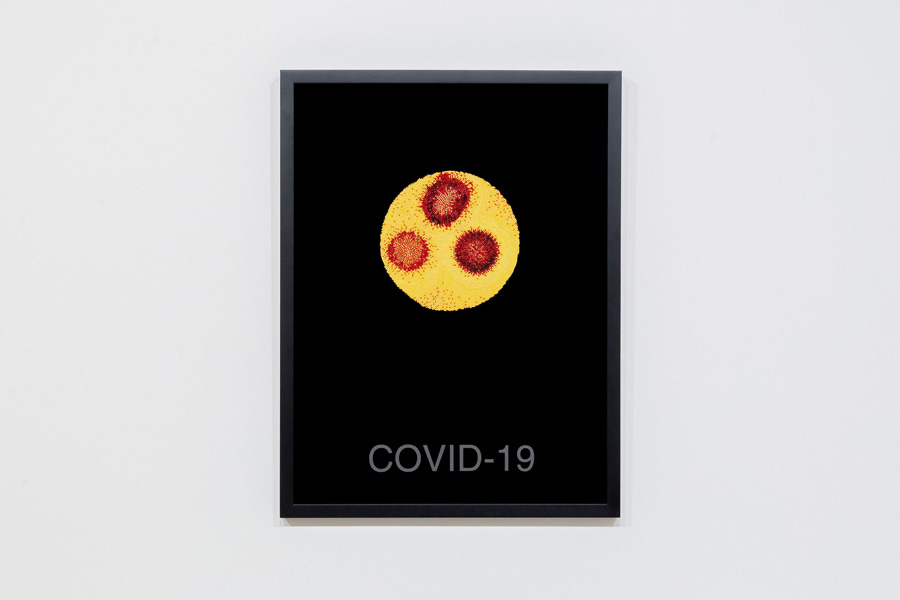
Ruth Cuthand (BFA’83, MFA’92)
COVID-19 (from the Surviving Series)
2020
Glass beads and thread on cloth
Ruth Cuthand (BFA’83, MFA’92) was born in Prince Albert, Sask., is of Plains Cree and Scottish ancestry, and is a member of the Little Pine Cree Nation on Treaty 6 Territory. Through her work, Cuthand explores social, environmental, and historical issues, such as contaminated water and living conditions on First Nations, disease, colonialism, and relations between Indigenous and non-Indigenous people. She is known for creating intricate beaded images of disease, such as smallpox, cholera, and tuberculosis, which reference colonization and trading and their impact on Indigenous people. Acknowledged as one of Canada’s preeminent contemporary artists, Cuthand’s practice continues to contribute to Canadian and Saskatchewan art history through artistic production and community engagement. She has exhibited widely at both national and international venues and in 2020 had a solo survey exhibition at USask’s College Art Galleries titled Ruth Cuthand: Beads in the Blood, curated by Felicia Gay (BA’04, MA’11). In 2016, Cuthand was recognized as one of the USask College of Arts and Science’s Alumni of Influence and, in 2020, she was one of the winners of the prestigious Governor General’s Award in Visual and Media Arts. In 2021, Cuthand received the USask Lifetime Achievement Award, which recognizes a graduate for an outstanding lifetime of accomplishments and contributions to the social, cultural, and economic wellbeing of society.
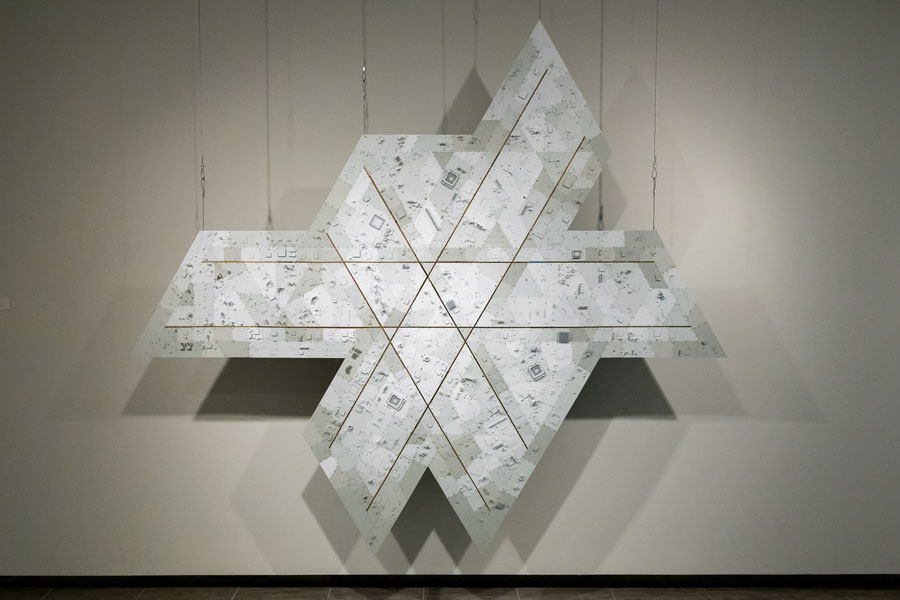
Wally Dion (BFA’04)
Icosahedron
2016
Circuit boards, wire, enamel paint
Visual artist Wally Dion was born in Saskatoon, Sask., is a member of the Yellow Quill First Nation (Salteaux), and currently lives in Binghamton, NY. In his work, Dion draws inspiration from artists such as Métis painter Bob Boyer, and from quilting bees during which First Nations women historically gathered to make quilts for burials, dances, and other ceremonies. Through his artistic practice he has recycled electronic waste, creating starblankets and shields out of computer circuitry boards and using patterns that reference traditional quilts and blankets. Since graduating from USask, Dion has earned a Master of Fine Arts degree from the Rhode Island School of Design and has received national and international acclaim. His artwork is included in numerous permanent collections—including the collections of the Saskatchewan Arts Board, the Canada Council Art Bank, the MacKenzie Art Gallery, Remai Modern, and Portland Art Museum—and he is known as an advocate for Indigenous artists. In 2022, Dion’s solo exhibition, skodenstoodis, was featured at USask’s College Art Galleries. The show, curated by Leah Taylor (BFA’04), included a 58-foot-long neon sculpture that was installed in the Nobel Plaza facing The Bowl area on campus. In 2023, Dion was included on the Sobey Art Award longlist.
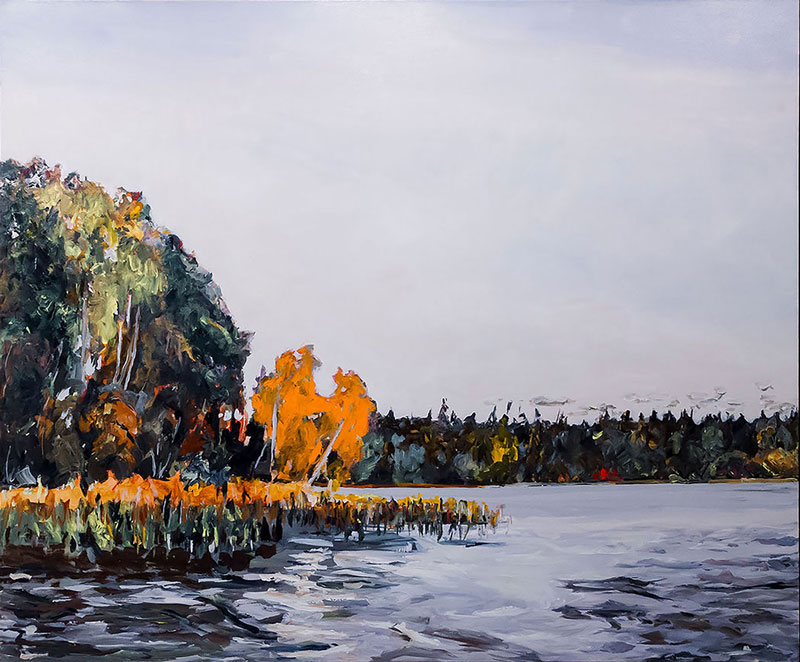
Dorothy Knowles
The Orange Tree
1993
Acrylic on canvas
The prolific career of Dorothy Knowles (BA’48), achieved over a period of 70 years of artistic production, marks an important history for painting in this province. Born in 1927 in Unity, Sask., Knowles’ roots as a landscape painter can be traced to USask’s famed Emma Lake Artists’ Workshops at the Emma Lake Kenderdine Campus. She painted on location, often working plein air, or from sketches and photographs that she would take back to the studio. By immersing herself in the elements, she aimed to capture the dynamics of the shifting skies and light, and subtle reflections in water, stylistically achieved through both deliberate and loose brushwork to capture the transformational qualities felt in nature. Throughout her seven decades as an artist, Knowles received many honours and awards, including the Saskatchewan Order of Merit in 1987. In 2004, she was named a member of the Order of Canada, and in 2006 Canada Post commemorated her work by issuing two stamps. In 2009, Knowles was named one of the 100 Alumni of Influence by the College of Arts and Science. In 2019, USask celebrated Knowles as one of five Alumni Achievement Award recipients. In 2023, Dorothy Knowles: by the water—an exhibition at the Kenderdine Art Gallery curated by Leah Taylor (BFA’04)—celebrated Knowles’ remarkable career and highlighted some of the outdoor places and spaces that inspired her.


